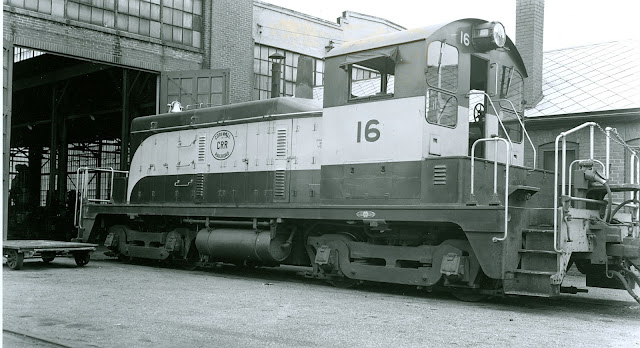 |
| The test section. |
My carpenter friend had some leftover four inch wide primed poplar material that was 3/8" thick. He gave me a few six foot boards to try. The photo of the test section shows the initial test. I had ripped the material into about 1/4" strips. I laid three strips on each side of the center line. Five strips was enough to support the ties, but then I would be off center. I nailed them to the plywood using 3/4" x 18 wire brads. I sanded the top of the roadbed to a smooth finish. I determined the test a success! After getting more material, I proceeded to lay the roadbed for the rest of the shop complex.
 |
| Shop complex roadbed laid. |
I'm not worried about the sound reverberating through the plywood. You don't really hear it when there is a room full of operators and the sound decoders making their noise. It doesn't bug me when I'm operating at Steven Mallery's, so I doubt it will bug me on this layout. Steven was right about this form of roadbed being expensive, but with my connection to getting leftover material that would be headed to a landfill otherwise, it is green and inexpensive solution for me.
 |
| Before plywood was cut for adding Elevations |
 |
| Back tracks not part of Shop |
There are two tracks that are not part of the shop complex. When my friends came over for our little round Robbin group we have going, I invited my carpenter and fellow model railroader to help us layout the land contours. He bought his battery powered nail gun along and laid these two road bed sections in a little less than an hour. It took me about five to lay the shop complex since I had to drill holes and tap the brads in by hand. He did let me try laying it with the gun, but I kept missing or splitting out the wood.
 |
| With Elevations added. |
I'm currently in the process of adding backdrops to the module. The black object in the center of the above photo is the beginning of the engine house / car shop building. Below is a shot showing the other side.






















